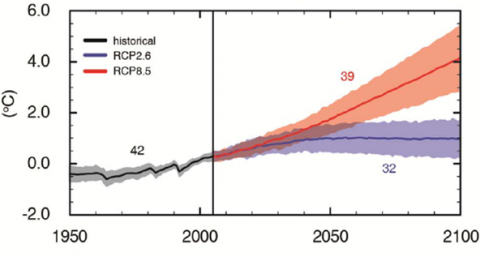Horse meat in burgers, melamine in milk and shark labelled as swordfish…as our urban lifestyle brings us further from our food sources, there are more opportunities for dishonesty along each link of the food production chain. Whether it’s a matter of making a good quality oil stretch a little further by adding cheaper oil or labeling something falsely to appeal to current consumer trends – it’s all fraud and it costs the global food industry an estimated US$10-15 billion each year [1].
While there is evidence that the incidences of food fraud are on the rise [2], consumers have been swindled by food producers since…well, since there have been food producers. Indeed food fraud in the 18th and early 19th century was so widespread and involved such toxic substances that it’s surprising that the citizens of industrialised nations managed to survive to their next meal [3]. Pickles were turned an alluring bright blue-green through the use of copper sulfate, children’s sweets were colored with lead and copper, and chalk and lime (calcium oxide, not the fruit) were common additives to bread. By comparison, one might argue that a little horsemeat in one’s burger might seem rather tame.
Unlike previous generations, however, our food supply systems have become incredibly complex. Food passes through many hands and travels around the world at such astonishing speeds that the threat of food fraud now has a global reach. Add to this a changing environment with implications for agriculture, food and energy security, and transportation and we may very well be creating the ideal conditions for culinary crimes: incentive and opportunity.
Factors contributing to food fraud
 |
Milk, olive oil, honey and spices are among
the most commonly adulterated foods.
Image by Nicola Temple. |
Unlike food safety issues, which generally stem from neglect, food fraud is a deliberate act, usually for financial gain. Behind every scandal are people who make decisions to be dishonest, but what is it that motivates these behaviours?
Some of the factors that are thought to have contributed to recent food fraud scandals, such as horsemeat in the UK and fox meat in China, include: the financial crisis, rising food prices, a demand for cheap food, complex food supply chains, a lack of strong penalties, and low risk of detection [4].
Climate change may trigger more criminal behaviour in the future
If we now look at these crime contributing factors in the context of climate change, we might expect to see even more food scandals hitting headlines in the future. More extreme weather events – such as droughts and floods – will affect agriculture, as will increased prevalence of disease and parasites that have longer life cycles in a warmer climate (e.g. blowfly strike). These conditions can force food producers into a state of desperation.
For example, in the late 1800s a tiny root-feeding aphid (Phylloxera) sucked the sap out of nearly 2.5 million hectares of grapes in France. The vineyard owners began to import raisins from other countries, desperate to fill demands for wine. They even fabricated wines entirely from chemicals, sugar and water [5].
The costs of food transportation may also increase as changes in weather patterns and extreme weather events cause infrastructure disruptions and the price of fossil fuels (upon which our food transportation systems are so dependent) increases.
The combination of farmers thwarted by environmental conditions and increased transportation costs alone could potentially increase the costs associated with food production. All the while, an ever growing global population continues to demand cheap food. It is indeed a situation that could very well force otherwise honest people into shady territory.
While food fraud has been discussed thoroughly in terms of globalisation, and even in the context of security and acts of terrorism, to my knowledge there has yet to be much discussion on food fraud in the context of climate change and an uncertain environment.
Fighting food fraud
In a proactive approach to preventing food fraud there are two approaches: reducing the motivation behind the crime and reducing the opportunities to commit the crime [6]. Governments around the world are moving food fraud further up the agenda, considering action plans to crack down on fraudsters with more funding for testing, increased penalties and a more cooperative approach to gathering and sharing information on types of food fraud.
At the same time, researchers are doing their best to help build resilient agriculture through the development of disease and drought resistant crops, increased yields, disease prevention and welfare in livestock and more sustainable farming practices.
Other researchers are spearheading new technologies and methods that can detect food adulteration. This not only increases the risk of fraudsters getting caught, it forces the fraudsters to become more sophisticated in their techniques and eventually the cost of adulterating the food becomes so high it is no longer worthwhile.
As always, we as consumers are not helpless. Our behaviours and choices can make us less vulnerable to food fraud. If we reduce the number of steps between the producers and ourselves, this alone will reduce our chances of being swindled.
Over the last three years I have worked on several projects with the University of Bristol’s Cabot Institute. With every interaction I have with the researchers involved with Cabot, I find myself making new connections between the realities of daily life and how these may be altered in an uncertain and changing climate. I have spent considerable time thinking and writing about ocean acidification, warming temperatures, sea-ice melt, extreme weather events and food security and yet I have not given enough consideration to the impacts on things like education, finances, and security.
Any one of these topics on their own are overwhelming and so by necessity we need to break the issues down into tangible components. However, I’m grateful that there are groups like the Cabot Institute out there who are helping to hold the bigger picture – connecting a web and giving an occasional tug on the silk lines to see how the whole thing shakes.
Sources/notes
[1] Johnson R. (2014) Food Fraud and ‘Economically Motivated Adulteration’ of Food and Food Ingredients. Congressional Research Service Report (7-5700), Prepared for Members and Committees of Congress. http://www.fas.org/sgp/crs/misc/R43358.pdf
[2] Holpuch A. (23 January 2013) Food fraud report reveals rise in manufacturers’ cost-cutting measures. The Guardian < http://www.theguardian.com/world/2013/jan/23/food-fraud-report-cost-cutting>
[3] For a thorough and captivating history of food fraud, I highly recommend the book Swindled by Bee Wilson and published by Princeton University Press.
[4] Avery J. (16/01/2014) Fighting food fraud, European Parliamentary Research Service < http://www.europarl.europa.eu/RegData/bibliotheque/briefing/2014/130679/LDM_BRI(2014)130679_REV1_EN.pdf
[5] Wilson B. (2008) Swindled. Princeton, New Jersey: Princeton University Press. (Pg. 60)
[6] Spink J, Moyer DC. (2011) Defining the public health threat of food fraud. Journal of Food Science, 76 (9):R157-R163. http://onlinelibrary.wiley.com/doi/10.1111/j.1750-3841.2011.02417.x/full
This blog is written by Nicola Temple, Independent Science Writer and editor of the Cabot Institute Magazine. This blog was taken from Nicola’s blog with kind permission.
 |
| Nicola Temple |
























